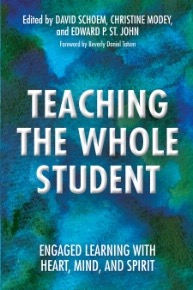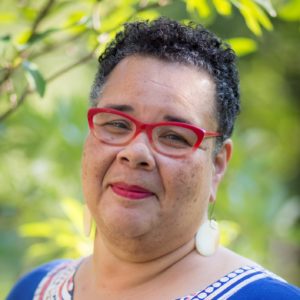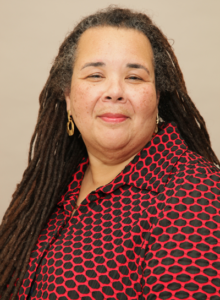engaged learning
Select an item by clicking its checkbox
Justice is one of those ideas that has captured our imaginations for generation upon generation; yet it is still a contested notion. Collectively, systemic racism, sexism, classism, homophobia, white supremacy, and a judicial system that is lenient on “white collar/white male” crime, while vengeful upon the poor and minoritized ...

Research on Student Civic Outcomes in Service Learning: Conceptual Frameworks and Methods
Date Reviewed: January 25, 2018
Research on Student Civic Outcomes in Service Learning: Conceptual Frameworks and Methods is the third volume in a series dedicated to research on service learning. This volume, with its timely focus on civic outcomes, is divided into three sections. It begins with an introduction to how student learning outcomes are embedded in service learning, then moves on to various theoretical frameworks by which one can situate research. It concludes with some nuts and bolts aspects of conducting research on student civic outcomes in service learning, defined as “a course or competency-based, credit-bearing educational experience in which students (a) participate in mutually identified service activities that benefit the community, and (b) reflect on the service activity in such a way as to gain further understanding of course content, a broader appreciation of the discipline, and an enhanced sense of personal values and civic responsibility” (10).
All three chapters in Part One are useful to the novice in this research area. “Introduction to Research on Service Learning and Student Civic Outcomes” provides a taxonomy of service learning courses, with essential attributes and levels of development for instructors to improve the quality of civic learning opportunities within service learning courses along with clear factors for individual as well as institutional research and assessment. “Student Civic Outcomes in Higher Education” offers a helpful literature review of civic outcomes, while ”Student Civic Learning through Service Learning” concludes Part One with two pertinent questions: (1) What do we know about cultivating civic learning through service learning courses? (2) What do we still need to learn about how the variables of course design influence civic learning? One key point repeated in each chapter is that civic outcomes in service learning should focus on learning with others and not doing for others.
Part Two explores research on civic outcomes in service learning through multiple disciplines and theoretical perspectives including social psychology, political theory, educational theory, philanthropic studies, human development, community psychology, critical theories, and activity theory. The chapter “Critical Theories and Student Civic Outcomes” most directly questions the “individualistic” and “server-centered” approach to service learning (184), noting, for example, that serving at a soup kitchen often counts as service learning but protesting does not (187). A critique of the AAC&U Civic Engagement VALUE rubric is particularly thought-provoking on issues of access and power (187-190).
Part Three turns more directly to the how-to of conducting research with chapters on quantitative, qualitative, and longitudinal research along with chapters on institutional characteristics and using local and national datasets. One of the most interesting chapters in this section, “Documenting and Gathering Authentic Evidence of Student Civic Outcomes,” asks “What counts as good evidence of learning and for whom?” (303). The chapter identifies two challenges familiar to those who work with assessment: making outcomes explicit and collecting authentic evidence (304-305). Unfortunately, much existing research depends on indirect evidence, and the chapter recommends use of the AAC&U VALUE rubric along with ePortfolios to enable formative and summative assessment.
Each chapter of the volume concludes with an extensive reference section. The volume is worthwhile for teachers and researchers who want to improve students’ service learning as a site for civic engagement.

Creating Citizens: Liberal Arts, Civic Engagement, and the Land-Grant Tradition
Date Reviewed: January 25, 2018
Using examples of community and civic engagement (CCE) at Auburn University, this collection of essays provides readers with a lens through which to view a number of debates in higher education. In the broadest sense, the essays address the question of the role of higher education. More narrowly, they ask questions such as, how do universities respond to increasing public pressure to demonstrate clear connections between education and job placement? Since the volume focuses on civic engagement, authors ask what the ideal relationship between a university and its surrounding community might be. How, for example, does a public university foster such relationships, of what sort, and to what end? With increasing pressure on students to graduate in four years, along with widespread perceptions of higher education as a form of job-specific training, it may seem rather bold for educators to promote a liberal arts education. However, Brunner argues that one can address these questions by looking to the ancient Greek and Roman liberal arts models, which “foster personal growth and civic participation” (1).
Through diverse case studies, the authors illustrate the high impact learning experiences that occur in CCE situations. For example, students in political science who do internships have a higher degree of satisfaction with the course, learn nuances about relationships between theory and problem-solving in a community, and often reconsider their career choices. This reconsideration results, in part, from the reflective component of CCE, which helps students make connections between classroom learning and their internships via writing assignments. These connections further illustrate the critical thinking (among other skills) that liberal arts education fosters – skills which align with employers’ desires in hiring.
While much of Creating Citizens focuses on teaching and student-learning outcomes, Brunner also addresses the contentious issue of how promotion and tenure committees are to evaluate the work of engaged scholarship. How, for instance, does engaged scholarship measure up to traditional peer-reviewed scholarship? Again, this is not a new question, but one that nevertheless impacts pre-tenured faculty decisions for research plans. Brunner notes that engaged scholarship combines teaching and service, is as rigorous as other peer-reviewed scholarship, and upholds university missions and values by engaging faculty in mutually-beneficial, community-based problem-solving. In short, students, faculty, the university, and the community all benefit from CCE.
Readers may wonder how the final essay fits within this volume; though interesting as a reflection on the role of non-native activist anthropologists working in India, the connection to the thematic foci of the other essays is tenuous. Overall, however, this volume would be of interest to educators looking for practical models of CCE that can be adapted to fit one’s own institutional location, mission, values, and vision for community relations. Land-grant institutions such as Auburn explicitly aim to promote application of research, in this case through CCE, a model that any institution of higher education would do well to consider adopting.

Teaching the Whole Student - Engaged Learning With Heart, Mind, and Spirit
Date Reviewed: December 13, 2017
This book gives both more and less than what its title promises. For the editors of this collection, teaching “the whole student” requires engaged learning (“active, participatory, experiential learning that links doing with thinking”) and integrative pedagogy (“crossing and stretching traditional intellectual disciplinary boundaries”) (1). In turn, these commitments are part and parcel of a larger commitment to educating for social justice, and the essays take on a wide array of topics, including effective and balanced service-learning, learning communities “done well,” and the importance of meaningful, sustained diversity engagement. Some of the essays are rather auto-biographical while others focus on a particular course or program. As is the case with many books of this type, the collection is an uneven assortment, and it is not always clear how an essay pertains to the promised subject of “teaching the whole student.” For those reasons, it can be somewhat disappointing.
Read in one way, however, hope emerges as a kind of connecting line and important theme. This is addressed most directly in the essay by Gillies Malnarich, who describes a moment of personal crisis as a teacher. She lay awake at night wondering, “What does it mean to educate for hope?” How can we make space for “raw, angry, heartbreaking, life-affirming hope… especially in our classrooms,” she asks, drawing upon both Paulo Freire and Rebecca Solnit’s writings (58). It also becomes clear that the kind of relational pedagogy being prescribed by many of the writers requires a willingness on the part of the teacher to bring his or her whole self into the classroom. In her essay on “Incorporating Social Justice into Teaching,” Kathleen Manning encourages readers to think of teaching as a spiritual act: “Teaching is not something learned once and perfected. The ever-changing nature of students, theory, and your personal and professional cycles as a person and professor make teaching an art. Because you are affecting people’s lives, approaching teaching and learning as spiritual practice places it in the realm of transcendence. Particularly when using principles of social justice to work toward a more just world, faith, trust, and authenticity must be part of the teaching and learning processes” (52).
There are many helpful ideas and strategies here, including the “Where I’m From” poetry assignment, a powerful way for students to disclose important aspects of their identity and express “links between their faith tradition and ethnicity,” among other things (164 - the activity comes from Beverly Daniel Tatum’s Can We Talk About Race? [Beacon, 2007]). Some of the essays include useful appendices - see, for example, the collaborative learning self-assessment (77) or the chart describing experiential classroom activities to promote dialogue (143).
Ultimately the strength of this book can be found in the questions that it poses more than in the answers it suggests. Each essay concludes with a set of reflection questions prompted by the content of the essay, and a patient, thoughtful reader could work her way through this book and be richly rewarded.
Exposing and disrupting the values which perpetuate white normativity puts a strain on the adult classroom. Individualism is a cornerstone value of whiteness and patriarchy. As persons committed to the flimsy lie of pulling oneself up by the bootstraps, too many students believe that education is best attempted alone. Conforming ...

